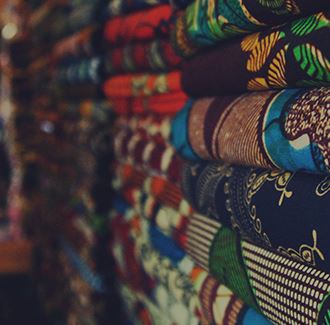
5 must-see places in Guinea-Bissau
Once the capital of Portuguese Guinea, Bolama holds a unique and grand architectural heritage. It is a shame that it is in a poor state of conservation – the most notable example being the Paços do Concelho Palace (or Governor's Palace), which is practically in ruins – but the old colonial buildings still clearly mark the urban landscape. It is a kind of poetic decadence that attracts the visitor's gaze like a magnet.
That being said, it wasn’t the architecture that struck me most during my visit to Bolama. It's very difficult to put into words, but it was a place where I felt incredibly well. There is a good energy in the air, people are extremely friendly, hospitable and tolerant. Christians and Muslims seem to live together harmoniously in the city, without any kind of friction or conflict; and everyone seems to welcome visitors with a big smile and open arms. If I had to choose only one destination to visit in the country, it would probably be Bolama. Unmissable!


Being the island of the Bijagós archipelago which is easier to access from the capital Bissau, the island of Bubaque is one of the Guinean destinations that receives the most tourists. Beaches like Bruce or Etikorete delight locals and visitors alike. The “city” of Bubaque, despite its very basic living conditions, is still a good base for exploring the island’s attractions.
In Bubaque, you may see pigs and goats roaming the streets – and some rubbish. You might find children bathing in the street with a bucket. You might hear the rhythmic sound of a pestle echoing from the stairs while walking by a house. You may notice big contrasts between life in the villages and the simple concept of taking a beach holiday. But you will never, not for a minute, feel unwelcome on the island.
Elalab is a typical Guinean village, a very simple village with houses built with materials extracted from the land and inhabited by a friendly and hard-working population. Visiting it is like going back in time.
In the company of a local guide, I visited the school and the church, the oldest villager of Elalab and his grandchildren, the houses where they live and even a sacred tree, under which the villagers gather to make important decisions for the community, including matters of justice.
For my part, I can assure you that visiting the Elalab village, the opportunity to spend time with the community and learn about the ecotourism project built in the village by a pair of Portuguese architects, was another of the highlights of my trip to Guinea-Bissau. I highly recommend the experience!


Varela is a small community located just a stone's throw away from Susana, very close to the border with Senegal, in the north of Guinea-Bissau, and is a destination that can either be essential or ignored on a trip to Guinea-Bissau. It depends, of course, on what the traveler is looking for.
It is not easy to get to Varela. The “road” is made up of holes surrounded by some asphalt, sand and dirt – and was in a deplorable state. But the worst thing is the dust, lots of dust. At a certain point, close to the town of Susana, we pass through a mangrove forest and, soon after, we enter the Cacheu River Mangroves Natural Park, at which point the traveler can begin to sigh with relief and think about arrival in Varela. And it's worth all the sacrifice.
In fact, my stay in Varela was one of the moments I remember more fondly of my entire Guinean journey. Not so much for the beach – which many consider one of the best in Guinea-Bissau – but mainly for the atmosphere in the village.


Capital of Guinea-Bissau, the city of Bissau is a box of surprises. The truth is, however, that other than the port of “Pindjiguiti”, the Presidential Palace, street markets like Bandim and some monuments, in terms of tourist attractions there is not much to visit in Bissau. But does that mean that the Guinean capital is not worth visiting? The answer is a resounding no. But it's good to moderate your expectations and know what you're getting into.
Start with the so-called Old Bissau. The heart of Bissau is a visual delight. Vibrant and colorful, every street shows the signs of the Portuguese presence of yesteryear. The buildings in the historic center are typically colonial and many are in a reasonable state of conservation. It's beautiful!
There is the Cathedral of Our Lady of Candelária, the Central Market, the Presidential Palace, the Franco-Bissau-Guinean Cultural Centre, the Coimbra Hotel itself – one of the best hotels to stay in Bissau – and the iconic Mão de Timba monument, in Praça dos Mártires, which pays tribute to the dozens of dockworkers who lost their lives following a strike on August 3rd, 1959, an episode that became known as the Pidjiguiti Massacre. And, of course, the chaotic Bandim Market for the more adventurous – among other attractions. Or you can simply let yourself get lost in the streets of the historic center. You'll love it!